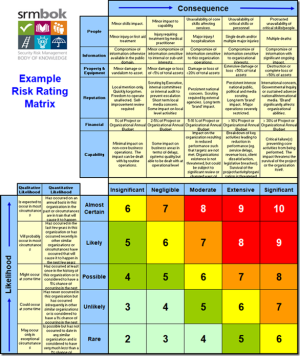The Art of Active Listening in Risk
 I have written before about the importance of listening over telling in risk:
I have written before about the importance of listening over telling in risk:
- https://safetyrisk.net/listening-to-the-symbols-of-christmas/
- https://safetyrisk.net/icue-listening-engagement-manual/
- https://safetyrisk.net/listening-learning-helping-and-caring-about-risk/
- https://safetyrisk.net/critical-listening-dealing-risk/
Active listening is unfortunately not in any safety curriculum, neither is there any focus on effective communication. Even when safety uses the word ‘communication’ it does not refer to the ethic of dialogue or mutuality. Communication in the safety curriculum is about taking a superior position as ‘safety know it all’ in a patronizing approach to amateurs who don’t know how to be safe. This hierarchical position is assumed because of the ideology of zero and the demonizing of injury as the definition of safety. Mantras like ‘safety is a choice you make’ and ‘all accidents are preventable’ also enable this naïve sense of superiority, which is absurdly labelled as ‘professional’ (when it is the opposite).
One of the great gifts of Rogerian psychology and client-centred (person-centered) counselling (https://www.counsellingconnection.com/wp-content/uploads/2013/03/Person-Centred-Therapy.pdf ) has been the focus on Active Listening as the key skill in ‘helping’ (read further Gerard Egan The Skilled Helper).
Safety could do well by including Roger’s book ‘Active Listening’ in the safety curriculum (https://www.skillseed.sg/journal/2020/6/18/dont-hear-me-listen-to-me-the-power-of-active-listening ). Of course, we know it won’t because Safety is known for its love of power and zero.
Active Listening is much more than hearing and listening (https://dl.uswr.ac.ir/bitstream/Hannan/140733/1/9780415743709.pdf ). Active listening is about a uniquely focused disposition to ‘the other’.
The key to Active Listening is to suspend agenda. Suspending agenda is a special form of intentionality towards the other that suspends any sense of knowing, superiority, telling or controlling purpose imposed on ‘the other’.
Active listening requires extensive practice in order to know how to turn it ‘on’ and ‘off’ as required.
It is one of the essentials to Care Ethics that one learns how to utilize Active Listening.
The AIHS BoK on Ethics make no mention of Care Ethics nor an ethic of helping.
Roger’s first published Active Listening in 1957 (some call it ‘deep listening’) and his work posed a threat to the discipline of Psychology that at the time was anchored to Psychotherapy (Freud) and Behaviourism (Skinner).
Rogerian counselling withholds all judgment of ‘the other’ and believes that ‘the other’ has all power within themselves to find healing and wellness. The same approach is taken in the Social Psychology of Risk (SPoR) that ‘helps’ others understand and manage risk, rather than being treated as objects of behavior to be told how to tackle risk.
What is most typical of the traditional approach to safety, imbued with the toxicity of behaviourism is: judgment, telling and demonising of persons as the cause of accidents. We see this kind of toxic orientation of the recent Worksafe Victoria marketing campaign. The first question in all this marketing is: finding cause, blame and seeking negligence (https://safetyrisk.net/you-market-what-you-believe-in-safety/ ).
Even when safety uses the language of ‘conversation’ it doesn’t mean mutual exchange. It means talking noise between 2 people where one is superior and the other is inferior. Just read this typical traditional safety goop and you will see what I mean:
- https://www.osha.gov/sites/default/files/SHP_Better-Safety-Conversations.pdf
- https://www.ehstoday.com/safety-leadership/article/21917574/a-5step-guide-for-a-safety-conversation
- https://safestart.com/news/7-proven-techniques-amazing-safety-conversations/
- https://sentis.com.au/articles/challenging-safety-conversations-the-most-important-things-to-say-arent-always-the-easiest
Going in to any conversation ‘with a purpose’ as suggested by this last piece of tripe means one already carries an agenda into the conversation and so will not: suspend agenda, actively listen or seek mutual understanding.
If your purpose is to ‘encourage more helpful safety behaviours’ then you won’t be actively listening and have already taken on the position of superiority as if the patronizing controller of ‘the other’. If you follow the link further in this piece you will see that it’s all just more behaviourism (https://sentis.com.au/articles/safety-reward-recognition ).
There is no leadership in any of this, no helping, no ethic and no ‘conversation’. Just read further on to the four points and you soon realise this has nothing to do with conversation, it’s all about power and control.
Active Listening disposes of any sense of power and control and believes that any sense of power resides in ‘the other’, not in the ‘teller’.
So, we see in most of this language of ‘conversation’ on the market in traditional safety that, it has nothing to do with conversation.
Its what Safety does best, using language as code to describe something that it is not (https://safetyrisk.net/deciphering-safety-code/ ).
If you want to learn something about Active Listening you could start here: https://aeon.co/essays/the-psychologist-carl-rogers-and-the-art-of-active-listening?
You will find none of this in any safety text or the AIHS BoK on safety.
Kate Murphy (You’re Not Listening) describes the situation well (https://www.bookishfirst.com/books/you-re-not-listening/sample ).
If you want to help others tackle risk (and act professionally), the last thing (agenda) one should take to a conversation in risk is the purpose to control safety. Such a purpose suppresses active listening, devalues ‘the other’, disempowers ‘the other’ and will always result in control, power and manipulation as the purpose of the so called ‘problem solver’.
Such an approach never solves problems because it robs ‘the other’ of ownership which means, the solution is never found in or by ‘the other’.
Unless power is ‘gifted’ to ‘the other’ to own the way they tackle risk then, they will be disempowered and nothing will change. (https://www.thindifference.com/2018/12/active-listening-the-gift-that-keeps-giving/ ). The last approach that should be taken to helping another tackle risk is an engineering problem solving approach. This is a recipe for a disaster.
In Active Listening, the ‘the other’ gifts (openly confesses vulnerabilities) and seeks help. In response, the helper doesn’t need to entertain ‘telling’, but facilitates through further Active Listening (empowering) the finding of response from inside ‘the other’. This requires extensive learning over years, continuing practice, education and significant effort to change orientation from current safety practice.
In SPoR we focus on Active Listening in Module 11: Communicating to The Unconscious: https://cllr.com.au/product/communicating-unconscious-risk-unit-11/



Brian Edwin Darlington says
Hi Rob, thanks for another great blog and to the point. I must admit the training that you provided our team on active listening, suspending ones own agenda, listening for metaphors and gifts has cotributed to a big change in our skills.
Kind Regards
Brian
Rob Long says
Thanks Brian. It is astounding that Safety does none of this.